Why we still need AM radio
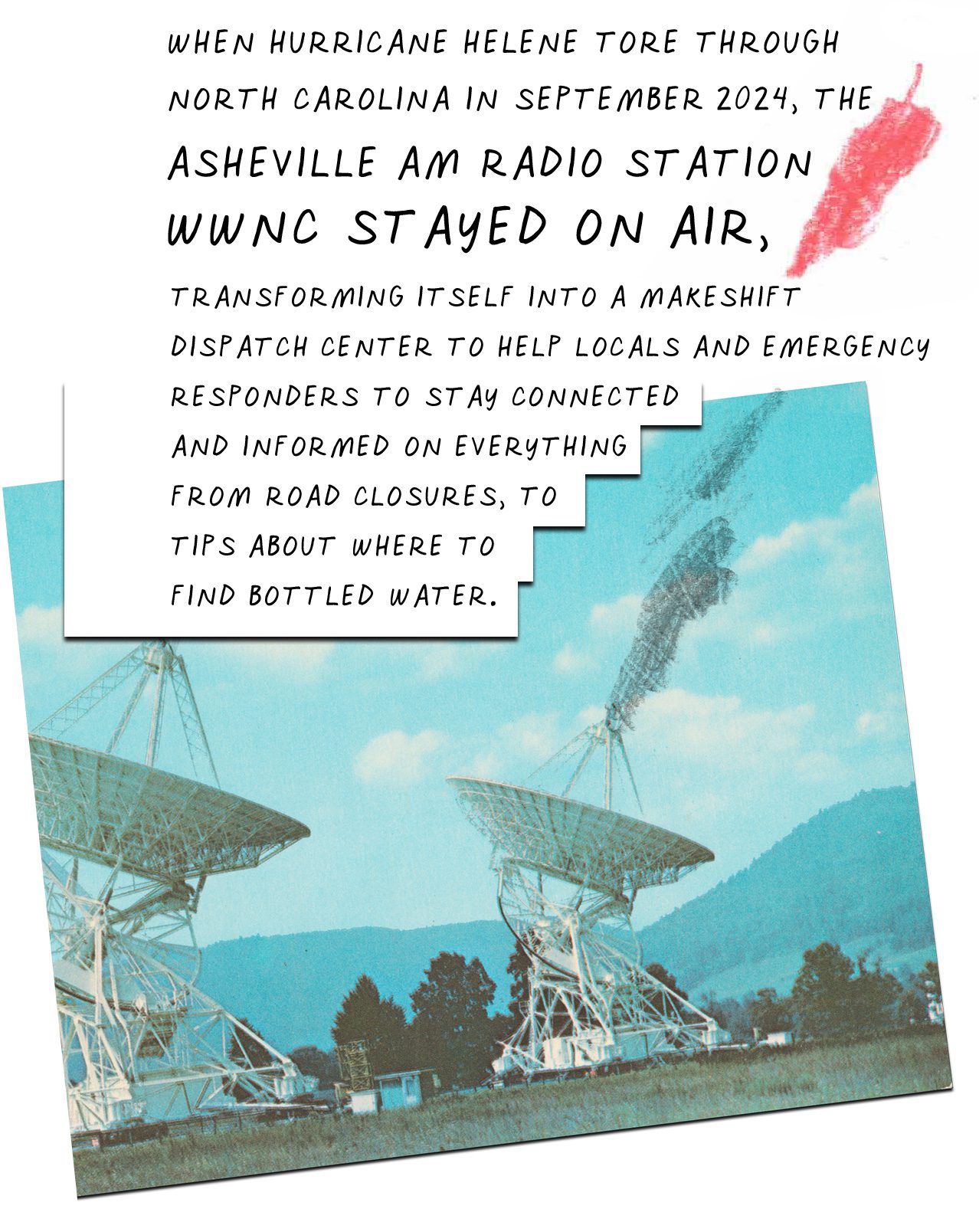



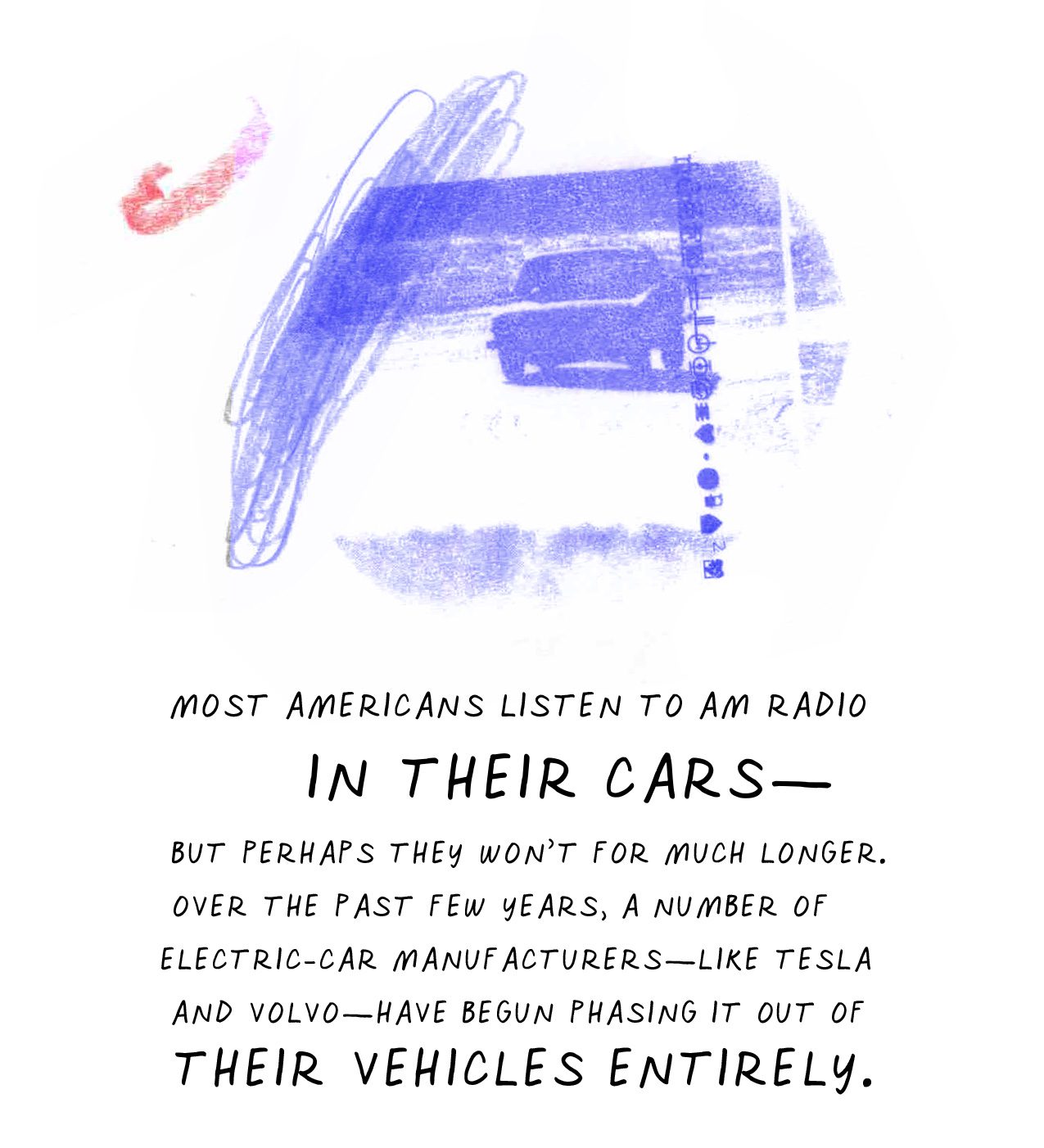








Ariel Aberg-Riger is the author of America Redux: Visual Stories from Our Dynamic History.














Ariel Aberg-Riger is the author of America Redux: Visual Stories from Our Dynamic History.

Recorded on April 23, 2025
Brain-Computer Interfaces: From Promise to Product
Speakers: David Rotman, editor at large, and Antonio Regalado, senior editor for biomedicine.
Brain-computer interfaces (BCIs) have been crowned the 11th Breakthrough Technology of 2025 by MIT Technology Review‘s readers. BCIs are electrodes implanted into the brain to send neural commands to computers, primarily to assist paralyzed people. Hear from MIT Technology Review editor at large David Rotman and senior editor for biomedicine Antonio Regalado as they explore the past, present, and future of BCIs.
Related Coverage

In satellite images, the 20-odd coral atolls of the Maldives look something like skeletal remains or chalk lines at a crime scene. But these landforms, which circle the peaks of a mountain range that has vanished under the Indian Ocean, are far from inert. They’re the products of living processes—places where coral has grown toward the surface over hundreds of thousands of years. Shifting ocean currents have gradually pushed sand—made from broken-up bits of this same coral—into more than 1,000 other islands that poke above the surface.
But these currents can also be remarkably transient, constructing new sandbanks or washing them away in a matter of weeks. In the coming decades, the daily lives of the half-million people who live on this archipelago—the world’s lowest-lying nation—will depend on finding ways to keep a solid foothold amid these shifting sands. More than 90% of the islands have experienced severe erosion, and climate change could make much of the country uninhabitable by the middle of the century.
Off one atoll, just south of the Maldives’ capital, Malé, researchers are testing one way to capture sand in strategic locations—to grow islands, rebuild beaches, and protect coastal communities from sea-level rise. Swim 10 minutes out into the En’boodhoofinolhu Lagoon and you’ll find the Ramp Ring, an unusual structure made up of six tough-skinned geotextile bladders. These submerged bags, part of a recent effort called the Growing Islands project, form a pair of parentheses separated by 90 meters (around 300 feet).
The bags, each about two meters tall, were deployed in December 2024, and by February, underwater images showed that sand had climbed about a meter and a half up the surface of each one, demonstrating how passive structures can quickly replenish beaches and, in time, build a solid foundation for new land. “There’s just a ton of sand in there. It’s really looking good,” says Skylar Tibbits, an architect and founder of the MIT Self-Assembly Lab, which is developing the project in partnership with the Malé-based climate tech company Invena.
The Self-Assembly Lab designs material technologies that can be programmed to transform or “self-assemble” in the air or underwater, exploiting natural forces like gravity, wind, waves, and sunlight. Its creations include sheets of wood fiber that form into three-dimensional structures when splashed with water, which the researchers hope could be used for tool-free flat-pack furniture.
Growing Islands is their largest-scale undertaking yet. Since 2017, the project has deployed 10 experiments in the Maldives, testing different materials, locations, and strategies, including inflatable structures and mesh nets. The Ramp Ring is many times larger than previous deployments and aims to overcome their biggest limitation.
In the Maldives, the direction of the currents changes with the seasons. Past experiments have been able to capture only one seasonal flow, meaning they lie dormant for months of the year. By contrast, the Ramp Ring is “omnidirectional,” capturing sand year-round. “It’s basically a big ring, a big loop, and no matter which monsoon season and which wave direction, it accumulates sand in the same area,” Tibbits says.
The approach points to a more sustainable way to protect the archipelago, whose growing population is supported by an economy that caters to 2 million annual tourists drawn by its white beaches and teeming coral reefs. Most of the country’s 187 inhabited islands have already had some form of human intervention to reclaim land or defend against erosion, such as concrete blocks, jetties, and breakwaters. Since the 1990s, dredging has become by far the most significant strategy. Boats equipped with high-power pumping systems vacuum up sand from one part of the seabed and spray it into a pile somewhere else. This temporary process allows resort developers and densely populated islands like Malé to quickly replenish beaches and build limitlessly customizable islands. But it also leaves behind dead zones where sand has been extracted—and plumes of sediment that cloud the water with a sort of choking marine smog. Last year, the government placed a temporary ban on dredging to prevent damage to reef ecosystems, which were already struggling amid spiking ocean temperatures.
Holly East, a geographer at the University of Northumbria, says Growing Islands’ structures offer an exciting alternative to dredging. But East, who is not involved in the project, warns that they must be sited carefully to avoid interrupting sand flows that already build up islands’ coastlines.
To do this, Tibbits and Invena cofounder Sarah Dole are conducting long-term satellite analysis of the En’boodhoofinolhu Lagoon to understand how sediment flows move around atolls. On the basis of this work, the team is currently spinning out a predictive coastal intelligence platform called Littoral. The aim is for it to be “a global health monitoring system for sediment transport,” Dole says. It’s meant not only to show where beaches are losing sand but to “tell us where erosion is going to happen,” allowing government agencies and developers to know where new structures like Ramp Rings can best be placed.
Growing Islands has been supported by the National Geographic Society, MIT, the Sri Lankan engineering group Sanken, and tourist resort developers. In 2023, it got a big bump from the US Agency for International Development: a $250,000 grant that funded the construction of the Ramp Ring deployment and would have provided opportunities to scale up the approach. But the termination of nearly all USAID contracts following the inauguration of President Trump means the project is looking for new partners.
Matthew Ponsford is a freelance reporter based in London.

Architecture often assumes a binary between built projects and theoretical ones. What physics allows in actual buildings, after all, is vastly different from what architects can imagine and design (often referred to as “paper architecture”). That imagination has long been supported and enabled by design technology, but the latest advancements in artificial intelligence have prompted a surge in the theoretical.



“Transductions: Artificial Intelligence in Architectural Experimentation,” a recent exhibition at the Pratt Institute in Brooklyn, brought together works from over 30 practitioners exploring the experimental, generative, and collaborative potential of artificial intelligence to open up new areas of architectural inquiry—something they’ve been working on for a decade or more, since long before AI became mainstream. Architects and exhibition co-curators Jason Vigneri-Beane, Olivia Vien, Stephen Slaughter, and Hart Marlow explain that the works in “Transductions” emerged out of feedback loops among architectural discourses, techniques, formats, and media that range from imagery, text, and animation to mixed-reality media and fabrication. The aim isn’t to present projects that are going to break ground anytime soon; architects already know how to build things with the tools they have. Instead, the show attempts to capture this very early stage in architecture’s exploratory engagement with AI.
Technology has long enabled architecture to push the limits of form and function. As early as 1963, Sketchpad, one of the first architectural software programs, allowed architects and designers to move and change objects on screen. Rapidly, traditional hand drawing gave way to an ever-expanding suite of programs—Revit, SketchUp, and BIM, among many others—that helped create floor plans and sections, track buildings’ energy usage, enhance sustainable construction, and aid in following building codes, to name just a few uses.
The architects exhibiting in “Transductions” view newly evolving forms of AI “like a new tool rather than a profession-ending development,” says Vigneri-Beane, despite what some of his peers fear about the technology. He adds, “I do appreciate that it’s a somewhat unnerving thing for people, [but] I feel a familiarity with the rhetoric.”
After all, he says, AI doesn’t just do the job. “To get something interesting and worth saving in AI, an enormous amount of time is required,” he says. “My architectural vocabulary has gotten much more precise and my visual sense has gotten an incredible workout, exercising all these muscles which have atrophied a little bit.”
Vien agrees: “I think these are extremely powerful tools for an architect and designer. Do I think it’s the entire future of architecture? No, but I think it’s a tool and a medium that can expand the long history of mediums and media that architects can use not just to represent their work but as a generator of ideas.”















Jason Vigneri-Beane, Pratt Institute
“These images are from a larger series on cyborg ecologies that have to do with co-creating with machines to imagine [other] machines,” says Vigneri-Beane. “I might refer to these as cryptomegafauna—infrastructural robots operating at an architectural scale.”


















Olivia Vien, Pratt Institute
For the series Imprinting Grounds, Vien created images digitally and fed them into Midjourney. “It riffs on the ideas of damask textile patterns in a more digital realm,” she says.




On Thanksgiving weekend of 2013, Jeff Bezos, then Amazon’s CEO, took to 60 Minutes to make a stunning announcement: Amazon was a few years away from deploying drones that would deliver packages to homes in less than 30 minutes.
It lent urgency to a problem that Parimal Kopardekar, director of the NASA Aeronautics Research Institute, had begun thinking about earlier that year.
“How do you manage and accommodate large-scale drone operations without overloading the air traffic control system?” Kopardekar, who goes by PK, recalls wondering. Busy managing all airplane takeoffs and landings, air traffic controllers clearly wouldn’t have the capacity to oversee the fleets of package-delivering drones Amazon was promising.
The solution PK devised, which subsequently grew into a collaboration between federal agencies, researchers, and industry, is a system called unmanned-aircraft-system traffic management, or UTM. Instead of verbally communicating with air traffic controllers, drone operators using UTM share their intended flight paths with each other via a cloud-based network.
This highly scalable approach may finally open the skies to a host of commercial drone applications that have yet to materialize. Amazon Prime Air launched in 2022 but was put on hold after crashes at a testing facility, for example. On any given day, only 8,500 or so unmanned aircraft fly in US airspace, the vast majority of which are used for recreational purposes rather than for services like search and rescue missions, real estate inspections, video surveillance, or farmland surveys.
One obstacle to wider use has been concern over possible midair drone-to-drone collisions. (Drones are typically restricted to airspace below 400 feet and their access to airports is limited, which significantly lowers the risk of drone-airplane collisions.) Under Federal Aviation Administration regulations, drones generally cannot fly beyond an operator’s visual line of sight, limiting flights to about a third of a mile. This prevents most collisions but also most use cases, such as delivering medication to a patient’s doorstep or dispatching a police drone to an active crime scene so first responders can better prepare before arriving.
Now, though, drone operators are increasingly incorporating UTM into their flights. The system uses path planning algorithms, like those that run in Google Maps, to chart a course that considers not only weather and obstacles like buildings and trees but the flight paths of nearby drones. It’ll automatically reroute a flight before takeoff if another drone has reserved the same volume of airspace at the same time, making the new flight trajectory visible to subsequent pilots. Drones can then fly autonomously to and from their destination, and no air traffic controller is required.
Over the past decade, NASA and industry have demonstrated to the FAA through a series of tests that drones can safely maneuver around each other by adhering to UTM. And last summer, the agency gave the go-ahead for multiple drone delivery companies using UTM to begin flying simultaneously in the same airspace above Dallas—a first in US aviation history. Drone operators without in-house UTM capabilities have also begun licensing UTM services from FAA-approved third-party providers.
UTM only works if all participants abide by the same rules and agree to share data, and it’s enabled a level of collaboration unusual for companies competing to gain a foothold in a young, hot field, notes Peter Sachs, head of airspace integration strategy at Zipline, a drone delivery company based in South San Francisco that’s approved to use UTM.
“We all agree that we need to collaborate on the practical, behind-the-scenes nuts and bolts to make sure that this preflight deconfliction for drones works really well,” Sachs says. (“Strategic deconfliction” is the technical term for processes that minimize drone-drone collisions.) Zipline and the drone delivery companies Wing, Flytrex, and DroneUp all operate in the Dallas area and are racing to expand to more cities, yet they disclose where they’re flying to one another in the interest of keeping the airspace conflict-free.
Greater adoption of UTM may be on the way. The FAA is expected to soon release a new rule called Part 108 that may allow operators to fly beyond visual line of sight if, among other requirements, they have some UTM capability, eliminating the need for the difficult-to-obtain waiver the agency currently requires for these flights. To safely manage this additional drone traffic, drone companies will have to continue working together to keep their aircraft out of each other’s way.
Yaakov Zinberg is a writer based in Cambridge, Massachusetts.

As a child of an electronic engineer, I spent a lot of time in our local Radio Shack as a kid. While my dad was locating capacitors and resistors, I was in the toy section. It was there, in 1984, that I discovered the best toy of my childhood: the Armatron robotic arm.



Described as a “robot-like arm to aid young masterminds in scientific and laboratory experiments,” it was the rare toy that lived up to the hype printed on the front of the box. This was a legit robotic arm. You could rotate the arm to spin around its base, tilt it up and down, bend it at the “elbow” joint, rotate the “wrist,” and open and close the bright-orange articulated hand in elegant chords of movement, all using only the twistable twin joysticks.
Anyone who played with this toy will also remember the sound it made. Once you slid the power button to the On position, you heard a constant whirring sound of plastic gears turning and twisting. And if you tried to push it past its boundaries, it twitched and protested with a jarring “CLICK … CLICK … CLICK.”
It wasn’t just kids who found the Armatron so special. It was featured on the cover of the November/December 1982 issue of Robotics Age magazine, which noted that the $31.95 toy (about $96 today) had “capabilities usually found only in much more expensive experimental arms.”
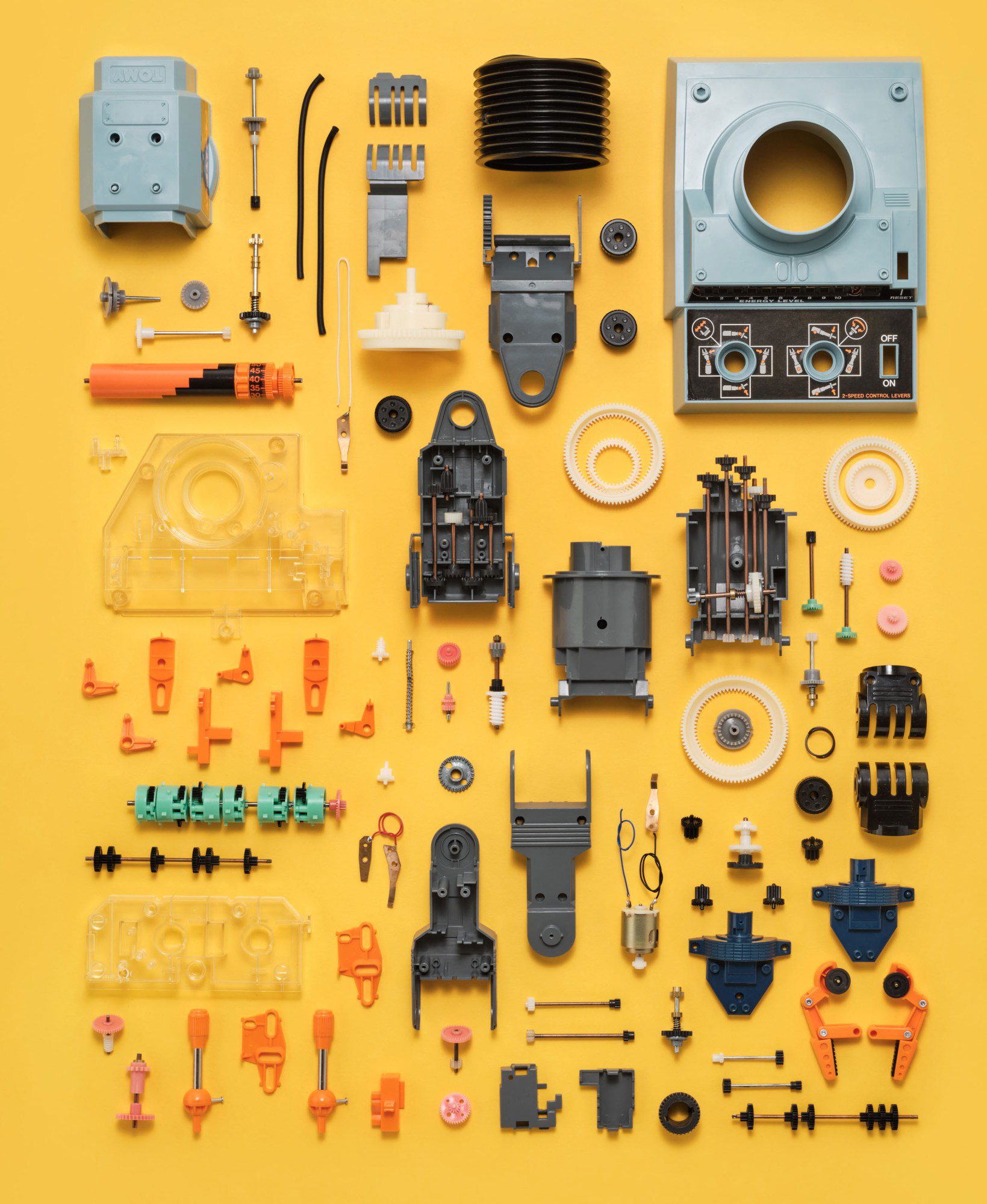


A few years ago I found my Armatron, and when I opened the case to get it working again, I was startled to find that other than the compartment for the pair of D-cell batteries, a switch, and a tiny three-volt DC motor, this thing was totally devoid of any electronic components. It was purely mechanical. Later, I found the patent drawings for the Armatron online and saw how incredibly complex the schematics of the gearbox were. This design was the work of a genius—or a madman.
I needed to know the story of this toy. I reached out to the manufacturer, Tomy (now known as Takara Tomy), which has been in business in Japan for over 100 years. It put me in touch with Hiroyuki Watanabe, a 69-year-old engineer and toy designer living in Tokyo. He’s retired now, but he worked at Tomy for 49 years, building many classic handheld electronic toys of the ’80s, including Blip, Digital Diamond, Digital Derby, and Missile Strike. Watanabe’s name can be found on 44 patents, and he was involved in bringing between 50 and 60 products to market. Watanabe answered emailed questions via video, and his responses were translated from Japanese.
“I didn’t have a period where I studied engineering professionally. Instead, I enrolled in what Japan would call a technical high school that trains technical engineers, and I actually [entered] the electrical department there,” he told me.
Afterward, he worked at Komatsu Manufacturing—because, he said, he liked bulldozers. But in 1974, he saw that Tomy was hiring, and he wanted to make toys. “I was told that it was the No. 1 toy company in Japan, so I decided [it was worth a look],” he said. “I took a night train from Tohoku to Tokyo to take a job exam, and that’s how I ended up joining the company.”
The inspiration for the Armatron came from a newspaper clipping that Watanabe’s boss brought to him one day. “It showed an image of a [mechanical arm] holding an egg with three fingers. I think we started out thinking, ‘This is where things are heading these days, so let’s make this,’” he recalled.
As the lead of a small team, Watanabe briefly turned his attention to another project, and by the time he returned to the robotic arm, the team had a prototype. But it was quite different from the Armatron’s final form. “The hand stuck out from the main body to the side and could only move about 90 degrees. The control panel also had six movement positions, and they were switched using six switches. I personally didn’t like that,” said Watanabe. So he went back to work.
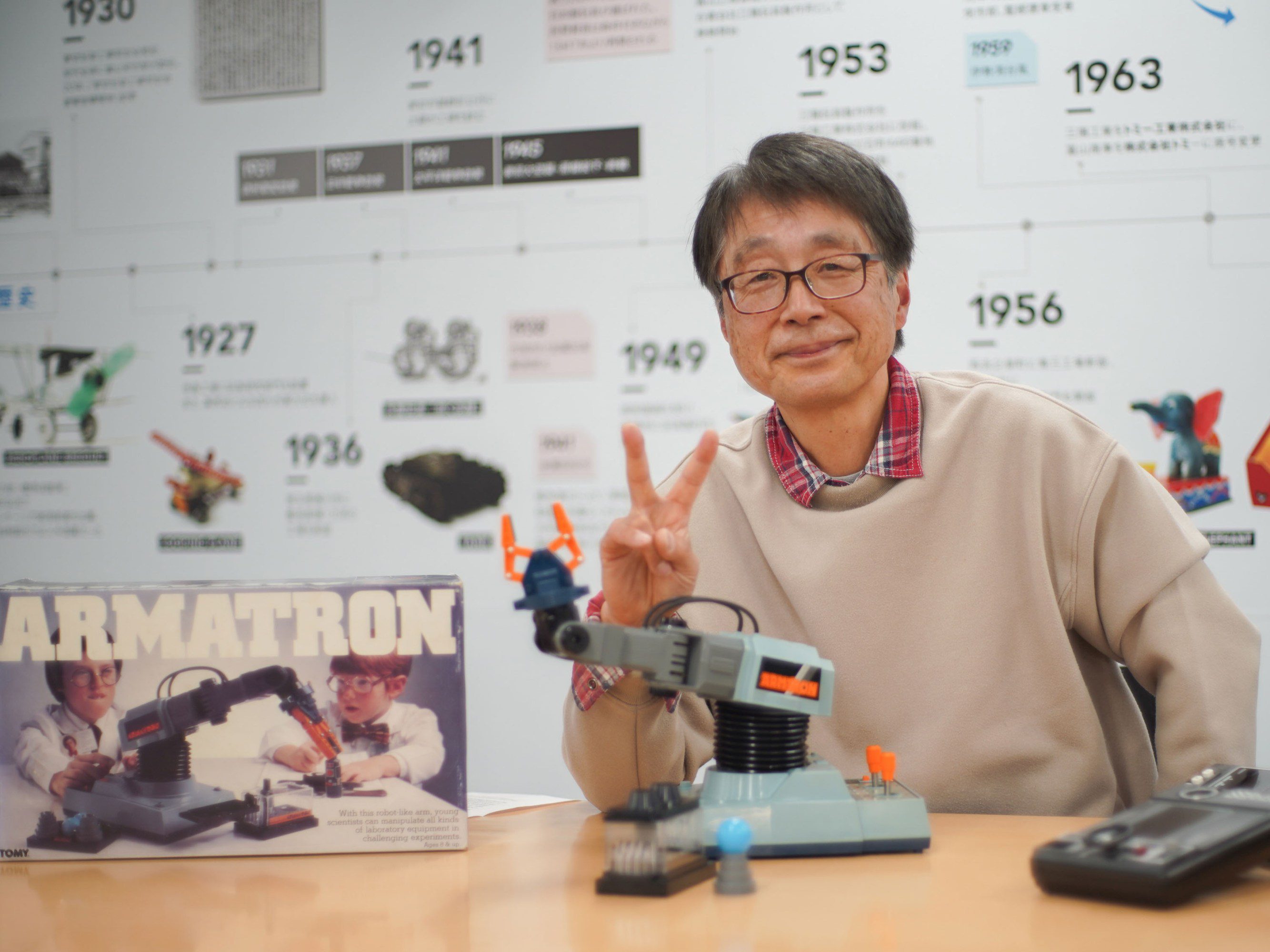


Watanabe’s breakthrough was inspired by the radio-controlled helicopters he operated as a hobby. Holding up a radio remote controller with dual joystick controls, he told me, “This stick operation allows you to perform four movements with two arms, but I thought that if you twist this part, you can use six movements.”



“I had always wanted to create a system that could rotate 360 degrees, so I thought about how to make that system work,” he added.
Watanabe stressed that while he is listed as the Armatron’s primary inventor, it was a team effort. A designer created the case, colors, and logo, adding touches to mimic features seen on industrial robots of the time, such as the rubber tubes (which are just for looks).
When the Armatron first came out, in 1981, robotics engineers started contacting Watanabe. “I wasn’t so much hearing from people at toy stores, but rather from researchers at university laboratories, factories, and companies that were making industrial robots,” he said. “They were quite encouraging, and we often talked together.”
The bold look and function of Armatron made quite an impression on many young kids who would one day have a career in robotics.
One of them was Adam Borrell, a mechanical design engineer who has been building robots for 15 years at Boston Dynamics, including Petman, the YouTube-famous Atlas, and the dog-size quadruped called Spot.
Borrell grew up a few blocks away from a Radio Shack in New York City. “If I was going to the subway station, we would walk right by Radio Shack. I would stop in and play with it and set the timer, do the challenges,” he says. “I know it was a toy, but that was a real robot.” The Armatron was the hook that lured him into Radio Shack and then sparked his lifelong interest in engineering: “I would roll pennies and use them to buy soldering irons and solder at Radio Shack.”
“There’s research to this day using AI to try to figure out optimal ways to grab objects that [a robot] sees in a bin or out in the world.”
Borrell had a fateful reunion with the toy while in grad school for engineering. “One of my office mates had an Armatron at his desk,” he recalls, “and it was broken. We took it apart together, and that was the first time I had seen the guts of it.
“It had this fantastic mechanical gear train to just engage and disengage this one motor in a bunch of different ways. And it was really fascinating that it had done so much—the one little motor. And that sort of got me back thinking about industrial robot arms again.”
Eric Paulos, a professor of electrical engineering and computer science at the University of California, Berkeley, recalls nagging his parents about what an educational gift Armatron would make. Ultimately, he succeeded in his lobbying.
“It was just endless exploration of picking stuff up and moving it around and even just watching it move. It was mesmerizing to me. I felt like I really owned my own little robot,” he recalls. “I cherish this thing. I still have it to this day, and it’s still working.”



Today, Paulos builds robots and teaches his students how to build their own. He challenges them to solve problems within constraints, such as building with cardboard or Play-Doh; he believes the restrictions facing Watanabe and his team ultimately forced them to be more creative in their engineering.
It’s not very hard to draw connections between the Armatron—an impossibly analog robot—and highly advanced machines that are today learning to move in incredible new ways, powered by AI advancements like computer vision and reinforcement learning.
Paulos sees parallels between the problems he tackled as a kid with his Armatron and those that researchers are still trying to deal with today: “What happens when you pick things up and they’re too heavy, but you can sort of pick it up if you approach it from different angles? Or how do you grip things? There’s research to this day using AI to try to figure out optimal ways to grab objects that [a robot] sees in a bin or out in the world.”
While AI may be taking over the world of robotics, the field still requires engineers—builders and tinkerers who can problem-solve in the physical world.



The Armatron encouraged kids to explore these analog mechanics, a reminder that not all breakthroughs happen on a computer screen. And that hands-on curiosity hasn’t faded. Today, a new generation of fans are rediscovering the Armatron through online communities and DIY modifications. Dozens of Armatron videos are on YouTube, including one where the arm has been modified to run on steam power.
“I’m very happy to see people who love mechanisms are amazed,” Watanabe told me. “I’m really happy that there are still people out there who love our products in this way.”
Jon Keegan writes about technology and AI and publishes Beautiful Public Data, a curated collection of government data sets (beautifulpublicdata.com).
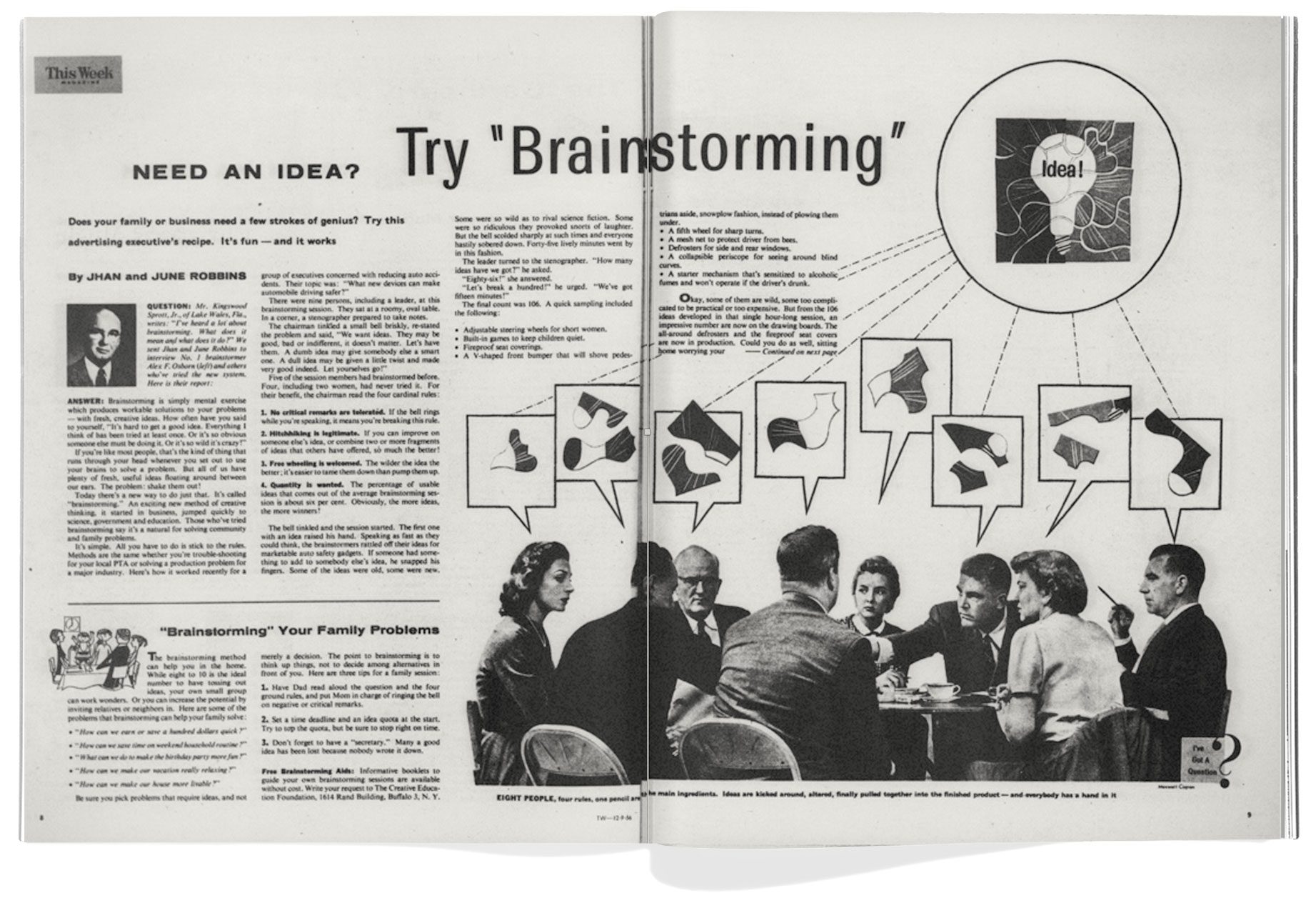
Americans don’t agree on much these days. Yet even at a time when consensus reality seems to be on the verge of collapse, there remains at least one quintessentially modern value we can all still get behind: creativity.
We teach it, measure it, envy it, cultivate it, and endlessly worry about its death. And why wouldn’t we? Most of us are taught from a young age that creativity is the key to everything from finding personal fulfillment to achieving career success to solving the world’s thorniest problems. Over the years, we’ve built creative industries, creative spaces, and creative cities and populated them with an entire class of people known simply as “creatives.” We read thousands of books and articles each year that teach us how to unleash, unlock, foster, boost, and hack our own personal creativity. Then we read even more to learn how to manage and protect this precious resource.
Given how much we obsess over it, the concept of creativity can feel like something that has always existed, a thing philosophers and artists have pondered and debated throughout the ages. While it’s a reasonable assumption, it’s one that turns out to be very wrong. As Samuel Franklin explains in his recent book, The Cult of Creativity, the first known written use of creativity didn’t actually occur until 1875, “making it an infant as far as words go.” What’s more, he writes, before about 1950, “there were approximately zero articles, books, essays, treatises, odes, classes, encyclopedia entries, or anything of the sort dealing explicitly with the subject of ‘creativity.’”
This raises some obvious questions. How exactly did we go from never talking about creativity to always talking about it? What, if anything, distinguishes creativity from other, older words, like ingenuity, cleverness, imagination, and artistry? Maybe most important: How did everyone from kindergarten teachers to mayors, CEOs, designers, engineers, activists, and starving artists come to believe that creativity isn’t just good—personally, socially, economically—but the answer to all life’s problems?
Thankfully, Franklin offers some potential answers in his book. A historian and design researcher at the Delft University of Technology in the Netherlands, he argues that the concept of creativity as we now know it emerged during the post–World War II era in America as a kind of cultural salve—a way to ease the tensions and anxieties caused by increasing conformity, bureaucracy, and suburbanization.
“Typically defined as a kind of trait or process vaguely associated with artists and geniuses but theoretically possessed by anyone and applicable to any field, [creativity] provided a way to unleash individualism within order,” he writes, “and revive the spirit of the lone inventor within the maze of the modern corporation.”



I spoke to Franklin about why we continue to be so fascinated by creativity, how Silicon Valley became the supposed epicenter of it, and what role, if any, technologies like AI might have in reshaping our relationship with it.
I’m curious what your personal relationship to creativity was growing up. What made you want to write a book about it?
Like a lot of kids, I grew up thinking that creativity was this inherently good thing. For me—and I imagine for a lot of other people who, like me, weren’t particularly athletic or good at math and science—being creative meant you at least had some future in this world, even if it wasn’t clear what that future would entail. By the time I got into college and beyond, the conventional wisdom among the TED Talk register of thinkers—people like Daniel Pink and Richard Florida—was that creativity was actually the most important trait to have for the future. Basically, the creative people were going to inherit the Earth, and society desperately needed them if we were going to solve all of these compounding problems in the world.
On the one hand, as someone who liked to think of himself as creative, it was hard not to be flattered by this. On the other hand, it all seemed overhyped to me. What was being sold as the triumph of the creative class wasn’t actually resulting in a more inclusive or creative world order. What’s more, some of the values embedded in what I call the cult of creativity seemed increasingly problematic—specifically, the focus on self-realization, doing what you love, and following your passion. Don’t get me wrong—it’s a beautiful vision, and I saw it work out for some people. But I also started to feel like it was just a cover for what was, economically speaking, a pretty bad turn of events for many people.
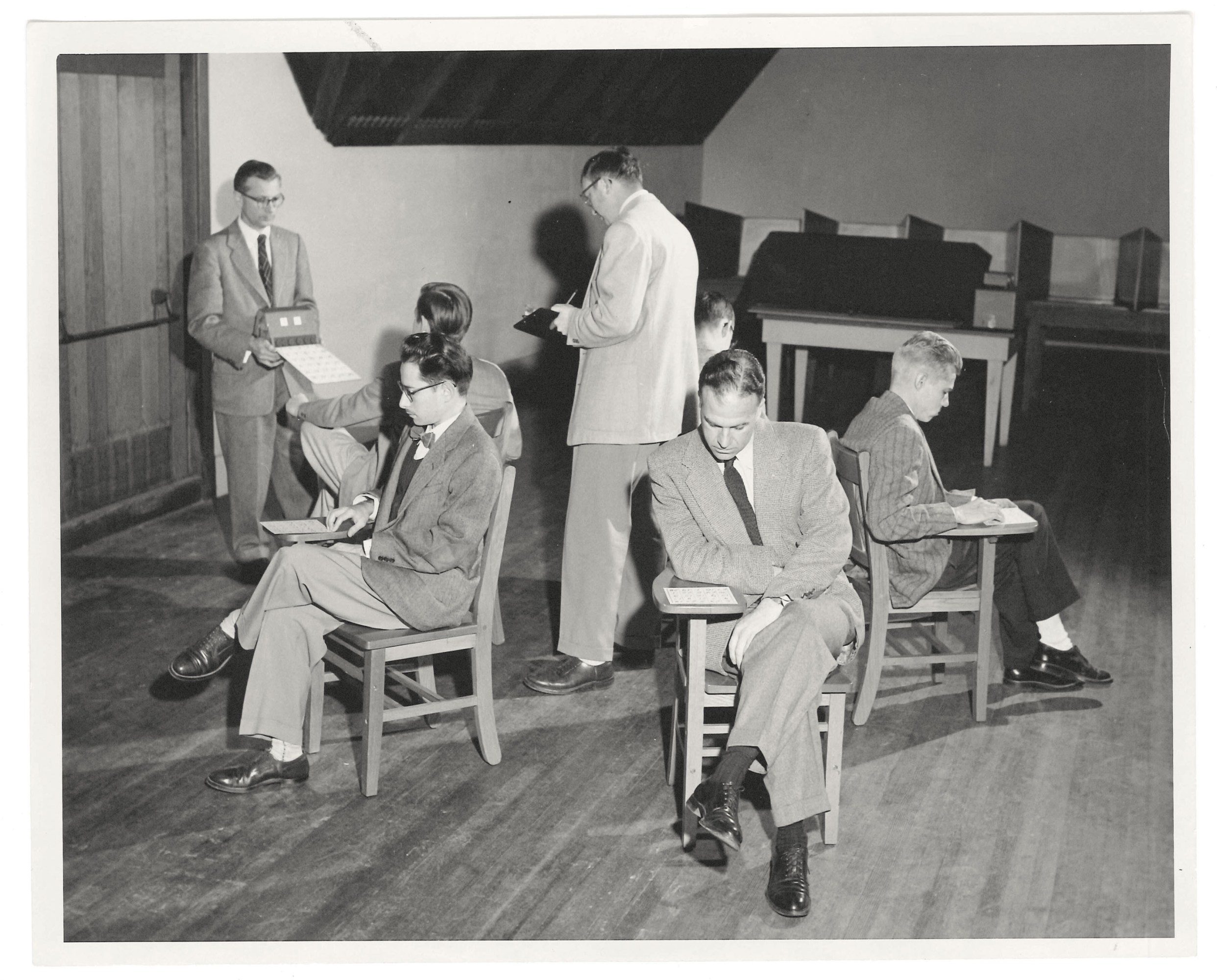


Nowadays, it’s quite common to bash the “follow your passion,” “hustle culture” idea. But back when I started this project, the whole move-fast-and-break-things, disrupter, innovation-economy stuff was very much unquestioned. In a way, the idea for the book came from recognizing that creativity was playing this really interesting role in connecting two worlds: this world of innovation and entrepreneurship and this more soulful, bohemian side of our culture. I wanted to better understand the history of that relationship.
When did you start thinking about creativity as a kind of cult—one that we’re all a part of?
Similar to something like the “cult of domesticity,” it was a way of describing a historical moment in which an idea or value system achieves a kind of broad, uncritical acceptance. I was finding that everyone was selling stuff based on the idea that it boosted your creativity, whether it was a new office layout, a new kind of urban design, or the “Try these five simple tricks” type of thing.
You start to realize that nobody is bothering to ask, “Hey, uh, why do we all need to be creative again? What even is this thing, creativity?” It had become this unimpeachable value that no one, regardless of what side of the political spectrum they fell on, would even think to question. That, to me, was really unusual, and I think it signaled that something interesting was happening.
Your book highlights midcentury efforts by psychologists to turn creativity into a quantifiable mental trait and the “creative person” into an identifiable type. How did that play out?
The short answer is: not very well. To study anything, you of course need to agree on what it is you’re looking at. Ultimately, I think these groups of psychologists were frustrated in their attempts to come up with scientific criteria that defined a creative person. One technique was to go find people who were already eminent in fields that were deemed creative—writers like Truman Capote and Norman Mailer, architects like Louis Kahn and Eero Saarinen—and just give them a battery of cognitive and psychoanalytic tests and then write up the results. This was mostly done by an outfit called the Institute of Personality Assessment and Research (IPAR) at Berkeley. Frank Barron and Don MacKinnon were the two biggest researchers in that group.
Another way psychologists went about it was to say, all right, that’s not going to be practical for coming up with a good scientific standard. We need numbers, and lots and lots of people to certify these creative criteria. This group of psychologists theorized that something called “divergent thinking” was a major component of creative accomplishment. You’ve heard of the brick test, where you’re asked to come up with many creative uses for a brick in a given amount of time? They basically gave a version of that test to Army officers, schoolchildren, rank-and-file engineers at General Electric, all kinds of people. It’s tests like those that ultimately became stand-ins for what it means to be “creative.”
Are they still used?
When you see a headline about AI making people more creative, or actually being more creative than humans, the tests they are basing that assertion on are almost always some version of a divergent thinking test. It’s highly problematic for a number of reasons. Chief among them is the fact that these tests have never been shown to have predictive value—that’s to say, a third grader, a 21-year-old, or a 35-year-old who does really well on divergent thinking tests doesn’t seem to have any greater likelihood of being successful in creative pursuits. The whole point of developing these tests in the first place was to both identify and predict creative people. None of them have been shown to do that.
Reading your book, I was struck by how vague and, at times, contradictory the concept of “creativity” was from the beginning. You characterize that as “a feature, not a bug.” How so?
Ask any creativity expert today what they mean by “creativity,” and they’ll tell you it’s the ability to generate something new and useful. That something could be an idea, a product, an academic paper—whatever. But the focus on novelty has remained an aspect of creativity from the beginning. It’s also what distinguishes it from other similar words, like imagination or cleverness. But you’re right: Creativity is a flexible enough concept to be used in all sorts of ways and to mean all sorts of things, many of them contradictory. I think I write in the book that the term may not be precise, but that it’s vague in precise and meaningful ways. It can be both playful and practical, artsy and technological, exceptional and pedestrian. That was and remains a big part of its appeal.
The question of “Can machines be ‘truly creative’?” is not that interesting, but the questions of “Can they be wise, honest, caring?” are more important if we’re going to be welcoming [AI] into our lives as advisors and assistants.
Is that emphasis on novelty and utility a part of why Silicon Valley likes to think of itself as the new nexus for creativity?
Absolutely. The two criteria go together. In techno-solutionist, hypercapitalist milieus like Silicon Valley, novelty isn’t any good if it’s not useful (or at least marketable), and utility isn’t any good (or marketable) unless it’s also novel. That’s why they’re often dismissive of boring-but-important things like craft, infrastructure, maintenance, and incremental improvement, and why they support art—which is traditionally defined by its resistance to utility—only insofar as it’s useful as inspiration for practical technologies.
At the same time, Silicon Valley loves to wrap itself in “creativity” because of all the artsy and individualist connotations. It has very self-consciously tried to distance itself from the image of the buttoned-down engineer working for a large R&D lab of a brick-and-mortar manufacturing corporation and instead raise up the idea of a rebellious counterculture type tinkering in a garage making weightless products and experiences. That, I think, has saved it from a lot of public scrutiny.
Up until recently, we’ve tended to think of creativity as a human trait, maybe with a few exceptions from the rest of the animal world. Is AI changing that?
When people started defining creativity in the ’50s, the threat of computers automating white-collar work was already underway. They were basically saying, okay, rational and analytical thinking is no longer ours alone. What can we do that the computers can never do? And the assumption was that humans alone could be “truly creative.” For a long time, computers didn’t do much to really press the issue on what that actually meant. Now they’re pressing the issue. Can they do art and poetry? Yes. Can they generate novel products that also make sense or work? Sure.
I think that’s by design. The kinds of LLMs that Silicon Valley companies have put forward are meant to appear “creative” in those conventional senses. Now, whether or not their products are meaningful or wise in a deeper sense, that’s another question. If we’re talking about art, I happen to think embodiment is an important element. Nerve endings, hormones, social instincts, morality, intellectual honesty—those are not things essential to “creativity” necessarily, but they are essential to putting things out into the world that are good, and maybe even beautiful in a certain antiquated sense. That’s why I think the question of “Can machines be ‘truly creative’?” is not that interesting, but the questions of “Can they be wise, honest, caring?” are more important if we’re going to be welcoming them into our lives as advisors and assistants.
This interview is based on two conversations and has been edited and condensed for clarity.
Bryan Gardiner is a writer based in Oakland, California.

At first glance, the Bathhouse spa in Brooklyn looks not so different from other high-end spas. What sets it apart is out of sight: a closet full of cryptocurrency-mining computers that not only generate bitcoins but also heat the spa’s pools, marble hammams, and showers.
When cofounder Jason Goodman opened Bathhouse’s first location in Williamsburg in 2019, he used conventional pool heaters. But after diving deep into the world of bitcoin, he realized he could fit cryptocurrency mining seamlessly into his business. That’s because the process, where special computers (called miners) make trillions of guesses per second to try to land on the string of numbers that will earn a bitcoin, consumes tremendous amounts of electricity—which in turn produces plenty of heat that usually goes to waste.
“I thought, ‘That’s interesting—we need heat,’” Goodman says of Bathhouse. Mining facilities typically use fans or water to cool their computers. And pools of water, of course, are a prominent feature of the spa.
It takes six miners, each roughly the size of an Xbox One console, to maintain a hot tub at 104 °F. At Bathhouse’s Williamsburg location, miners hum away quietly inside two large tanks, tucked in a storage closet among liquor bottles and teas. To keep them cool and quiet, the units are immersed directly in non-conductive oil, which absorbs the heat they give off and is pumped through tubes beneath Bathhouse’s hot tubs and hammams.
Mining boilers, which cool the computers by pumping in cold water that comes back out at 170 °F, are now also being used at the site. A thermal battery stores excess heat for future use.
Goodman says his spas aren’t saving energy by using bitcoin miners for heat, but they’re also not using any more than they would with conventional water heating. “I’m just inserting miners into that chain,” he says.
Goodman isn’t the only one to see the potential in heating with crypto. In Finland, Marathon Digital Holdings turned fleets of bitcoin miners into a district heating system to warm the homes of 80,000 residents. HeatCore, an integrated energy service provider, has used bitcoin mining to heat a commercial office building in China and to keep pools at a constant temperature for fish farming. This year it will begin a pilot project to heat seawater for desalination. On a smaller scale, bitcoin fans who also want some extra warmth can buy miners that double as space heaters.
Crypto enthusiasts like Goodman think much more of this is coming—especially under the Trump administration, which has announced plans to create a bitcoin reserve. This prospect alarms environmentalists.
The energy required for a single bitcoin transaction varies, but as of mid-March it was equivalent to the energy consumed by an average US household over 47.2 days, according to the Bitcoin Energy Consumption Index, run by the economist Alex de Vries.
Among the various cryptocurrencies, bitcoin mining gobbles up the most energy by far. De Vries points out that others, like ethereum, have eliminated mining and implemented less energy-intensive algorithms. But bitcoin users resist any change to their currency, so de Vries is doubtful a shift away from mining will happen anytime soon.
One key barrier to using bitcoin for heating, de Vries says, is that the heat can only be transported short distances before it dissipates. “I see this as something that is extremely niche,” he says. “It’s just not competitive, and you can’t make it work at a large scale.”
The more renewable sources that are added to electric grids to replace fossil fuels, the cleaner crypto mining will become. But even if bitcoin is powered by renewable energy, “that doesn’t make it sustainable,” says Kaveh Madani, director of the United Nations University Institute for Water, Environment, and Health. Mining burns through valuable resources that could otherwise be used to meet existing energy needs, Madani says.
For Goodman, relaxing into bitcoin-heated water is a completely justifiable use of energy. It soothes the muscles, calms the mind, and challenges current economic structures, all at the same time.
Carrie Klein is a freelance journalist based in New York City.

One day, in the near or far future, an asteroid about the length of a football stadium will find itself on a collision course with Earth. If we are lucky, it will land in the middle of the vast ocean, creating a good-size but innocuous tsunami, or in an uninhabited patch of desert. But if it has a city in its crosshairs, one of the worst natural disasters in modern times will unfold. As the asteroid steams through the atmosphere, it will begin to fragment—but the bulk of it will likely make it to the ground in just a few seconds, instantly turning anything solid into a fluid and excavating a huge impact crater in a heartbeat. A colossal blast wave, akin to one unleashed by a large nuclear weapon, will explode from the impact site in every direction. Homes dozens of miles away will fold like cardboard. Millions of people could die.
Fortunately for all 8 billion of us, planetary defense—the science of preventing asteroid impacts—is a highly active field of research. Astronomers are watching the skies, constantly on the hunt for new near-Earth objects that might pose a threat. And others are actively working on developing ways to prevent a collision should we find an asteroid that seems likely to hit us.
We already know that at least one method works: ramming the rock with an uncrewed spacecraft to push it away from Earth. In September 2022, NASA’s Double Asteroid Redirection Test, or DART, showed it could be done when a semiautonomous spacecraft the size of a small car, with solar panel wings, was smashed into an (innocuous) asteroid named Dimorphos at 14,000 miles per hour, successfully changing its orbit around a larger asteroid named Didymos.
But there are circumstances in which giving an asteroid a physical shove might not be enough to protect the planet. If that’s the case, we could need another method, one that is notoriously difficult to test in real life: a nuclear explosion.
Scientists have used computer simulations to explore this potential method of planetary defense. But in an ideal world, researchers would ground their models with cold, hard, practical data. Therein lies a challenge. Sending a nuclear weapon into space would violate international laws and risk inflaming political tensions. What’s more, it could do damage to Earth: A rocket malfunction could send radioactive debris into the atmosphere.
Over the last few years, however, scientists have started to devise some creative ways around this experimental limitation. The effort began in 2023, with a team of scientists led by Nathan Moore, a physicist and chemical engineer at the Sandia National Laboratories in Albuquerque, New Mexico. Sandia is a semi-secretive site that serves as the engineering arm of America’s nuclear weapons program. And within that complex lies the Z Pulsed Power Facility, or Z machine, a cylindrical metallic labyrinth of warning signs and wiring. It’s capable of summoning enough energy to melt diamond.
About 25,000 asteroids more than 460 feet long—a size range that starts with midsize “city killers” and goes up in impact from there—are thought to exist close to Earth. Just under half of them have been found.
The researchers reckoned they could use the Z machine to re-create the x-ray blast of a nuclear weapon—the radiation that would be used to knock back an asteroid—on a very small and safe scale.
It took a while to sort out the details. But by July 2023, Moore and his team were ready. They waited anxiously inside a control room, monitoring the thrumming contraption from afar. Inside the machine’s heart were two small pieces of rock, stand-ins for asteroids, and at the press of a button, a maelstrom of x-rays would thunder toward them. If they were knocked back by those x-rays, it would prove something that, until now, was purely theoretical: You can deflect an asteroid from Earth using a nuke.
This experiment “had never been done before,” says Moore. But if it succeeded, its data would contribute to the safety of everyone on the planet. Would it work?
Asteroid impacts are a natural disaster like any other. You shouldn’t lose sleep over the prospect, but if we get unlucky, an errant space rock may rudely ring Earth’s doorbell. “The probability of an asteroid striking Earth during my lifetime is very small. But what if one did? What would we do about it?” says Moore. “I think that’s worth being curious about.”
Forget about the gigantic asteroids you know from Hollywood blockbusters. Space rocks over two-thirds of a mile (about one kilometer) in diameter—those capable of imperiling civilization—are certainly out there, and some hew close to Earth’s own orbit. But because these asteroids are so elephantine, astronomers have found almost all of them already, and none pose an impact threat.
Rather, it’s asteroids a size range down—those upwards of 460 feet (140 meters) long—that are of paramount concern. About 25,000 of those are thought to exist close to our planet, and just under half have been found. The day-to-day odds of an impact are extremely low, but even one of the smaller ones in that size range could do significant damage if it found Earth and hit a populated area—a capacity that has led astronomers to dub such midsize asteroids “city killers.”
If we find a city killer that looks likely to hit Earth, we’ll need a way to stop it. That could be technology to break or “disrupt” the asteroid into fragments that will either miss the planet entirely or harmlessly ignite in the atmosphere. Or it could be something that can deflect the asteroid, pushing it onto a path that will no longer intersect with our blue marble.
Because disruption could accidentally turn a big asteroid into multiple smaller, but still deadly, shards bound for Earth, it’s often considered to be a strategy of last resort. Deflection is seen as safer and more elegant. One way to achieve it is to deploy a spacecraft known as a kinetic impactor—a battering ram that collides with an asteroid and transfers its momentum to the rocky interloper, nudging it away from Earth. NASA’s DART mission demonstrated that this can work, but there are some important caveats: You need to deflect the asteroid years in advance to make sure it completely misses Earth, and asteroids that we spot too late—or that are too big—can’t be swatted away by just one DART-like mission. Instead, you’d need several kinetic impactors—maybe many of them—to hit one side of the asteroid perfectly each time in order to push it far enough to save our planet. That’s a tall order for orbital mechanics, and not something space agencies may be willing to gamble on.
In that case, the best option might instead be to detonate a nuclear weapon next to the asteroid. This would irradiate one hemisphere of the asteroid in x-rays, which in a few millionths of a second would violently shatter and vaporize the rocky surface. The stream of debris spewing out of that surface and into space would act like a rocket, pushing the asteroid in the opposite direction. “There are scenarios where kinetic impact is insufficient, and we’d have to use a nuclear explosive device,” says Moore.



This idea isn’t new. Several decades ago, Peter Schultz, a planetary geologist and impacts expert at Brown University, was giving a planetary defense talk at the Lawrence Livermore National Laboratory in California, another American lab focused on nuclear deterrence and nuclear physics research. Afterwards, he recalls, none other than Edward Teller, the father of the hydrogen bomb and a key member of the Manhattan Project, invited him into his office for a chat. “He wanted to do one of these near-Earth-asteroid flybys and wanted to test the nukes,” Schultz says. What, he wondered, would happen if you blasted an asteroid with a nuclear weapon’s x-rays? Could you forestall a spaceborne disaster using weapons of mass destruction?
But Teller’s dream wasn’t fulfilled—and it’s unlikely to become a reality anytime soon. The United Nations’ 1967 Outer Space Treaty states that no nation can deploy or use nuclear weapons off-world (even if it’s not clear how long certain spacefaring nations will continue to adhere to that rule).
Even raising the possibility of using nukes to defend the planet can be tricky. “There’re still many folks that don’t want to talk about it at all … even if that were the only option to prevent an impact,” says Megan Bruck Syal, a physicist and planetary defense researcher at Lawrence Livermore. Nuclear weapons have long been a sensitive subject, and with relations between several nuclear nations currently at a new nadir, anxiety over the subject is understandable.
But in the US, there are groups of scientists who “recognize that we have a special responsibility as a spacefaring nation and as a nuclear-capable nation to look at this,” Syal says. “It isn’t our preference to use a nuclear explosive, of course. But we are still looking at it, in case it’s needed.”
But how?
Mostly, researchers have turned to the virtual world, using supercomputers at various US laboratories to simulate the asteroid-agitating physics of a nuclear blast. To put it mildly, “this is very hard,” says Mary Burkey, a physicist and planetary defense researcher at Lawrence Livermore. You cannot simply flick a switch on a computer and get immediate answers. “When a nuke goes off in space, there’s just x-ray light that’s coming out of it. It’s shining on the surface of your asteroid, and you’re tracking those little photons penetrating maybe a tiny little bit into the surface, and then somehow you have to take that micrometer worth of resolution and then propagate it out onto something that might be on the order of hundreds of meters wide, watching that shock wave propagate and then watching fragments spin off into space. That’s four different problems.”
Mimicking the physics of x-ray rock annihilation with as much verisimilitude as possible is difficult work. But recent research using these high-fidelity simulations does suggest that nukes are an effective planetary defense tool for both disruption and deflection. The thing is, though, no two asteroids are alike; each is mechanically and geologically unique, meaning huge uncertainties remain. A more monolithic asteroid might respond in a straightforward way to a nuclear deflection campaign, whereas a rubble pile asteroid—a weakly bound fleet of boulders barely held together by their own gravity—might respond in a chaotic, uncontrollable way. Can you be sure the explosion wouldn’t accidentally shatter the asteroid, turning a cannonball into a hail of bullets still headed for Earth?
Simulations can go a long way toward answering these questions, but they remain virtual re-creations of reality, with built-in assumptions. “Our models are only as good as the physics that we understand and that we put into them,” says Angela Stickle, a hypervelocity impact physicist at the Johns Hopkins University Applied Physics Laboratory in Maryland. To make sure the simulations are reproducing the correct physics and delivering realistic data, physical experiments are needed to ground them.
Every firing of the Z machine carries the energy of more than 1,000 lightning bolts, and each shot lasts a few millionths of a second.
Researchers studying kinetic impactors can get that sort of real-world data. Along with DART, they can use specialized cannons—like the Vertical Gun Range at NASA’s Ames Research Center in California—to fire all sorts of projectiles at meteorites. In doing so, they can find out how tough or fragile asteroid shards can be, effectively reproducing a kinetic impact mission on a small scale.
Battle-testing nuke-based asteroid defense simulations is another matter. Re-creating the physics of these confrontations on a small scale was long considered to be exceedingly difficult. Fortunately, those keen on fighting asteroids are as persistent as they are creative—and several teams, including Moore’s at Sandia, think they have come up with a solution.
The prime mission of Sandia, like that of Lawrence Livermore, is to help maintain the nation’s nuclear weapons arsenal. “It’s a national security laboratory,” says Moore. “Planetary defense affects the entire planet,” he adds—making it, by default, a national security issue as well. And that logic, in part, persuaded the powers that be in July 2022 to try a brand-new kind of experiment. Moore took charge of the project in January 2023—and with the shot scheduled for the summer, he had only a few months to come up with the specific plan for the experiment. There was “lots of scribbling on my whiteboard, running computer simulations, and getting data to our engineers to design the test fixture for the several months it would take to get all the parts machined and assembled,” he says.
Although there were previous and ongoing experiments that showered asteroid-like targets with x-rays, Moore and his team were frustrated by one aspect of them. Unlike actual asteroids floating freely in space, the micro-asteroids on Earth were fixed in place. To truly test whether x-rays could deflect asteroids, targets would have to be suspended in a vacuum—and it wasn’t immediately clear how that could be achieved.
Generating the nuke-like x-rays was the easy part, because Sandia had the Z machine, a hulking mass of diodes, pipes, and wires interwoven with an assortment of walkways that circumnavigate a vacuum chamber at its core. When it’s powered up, electrical currents are channeled into capacitors—and, when commanded, blast that energy at a target or substance to create radiation and intense magnetic pressures.
Flanked by klaxons and flashing lights, it’s an intimidating sight. “It’s the size of a building—about three stories tall,” says Moore. Every firing of the Z machine carries the energy of more than 1,000 lightning bolts, and each shot lasts a few millionths of a second: “You can’t even blink that fast.” The Z machine is named for the axis along which its energetic particles cascade, but the Z could easily stand for “Zeus.”



The original purpose of the Z machine, whose first form was built half a century ago, was nuclear fusion research. But over time, it’s been tinkered with, upgraded, and used for all kinds of science. “The Z machine has been used to compress matter to the same densities [you’d find at] the centers of planets. And we can do experiments like that to better understand how planets form,” Moore says, as an example. And the machine’s preternatural energies could easily be used to generate x-rays—in this case, by electrifying and collapsing a cloud of argon gas.
“The idea of studying asteroid deflection is completely different for us,” says Moore. And the machine “fires just once a day,” he adds, “so all the experiments are planned more than a year in advance.” In other words, the researchers had to be near certain their one experiment would work, or they would be in for a long wait to try again—if they were permitted a second attempt.
For some time, they could not figure out how to suspend their micro-asteroids. But eventually, they found a solution: Two incredibly thin bits of aluminum foil would hold their targets in place within the Z machine’s vacuum chamber. When the x-ray blast hit them and the targets, the pieces of foil would be instantly vaporized, briefly leaving the targets suspended in the chamber and allowing them to be pushed back as if they were in space. “It’s like you wave your magic wand and it’s gone,” Moore says of the foil. He dubbed this technique “x-ray scissors.”
In July 2023, after considerable planning, the team was ready. Within the Z machine’s vacuum chamber were two fingernail-size targets—a bit of quartz and some fused silica, both frequently found on real asteroids. Nearby, a pocket of argon gas swirled away. Satisfied that the gigantic gizmo was ready, everyone left and went to stand in the control room. For a moment, it was deathly quiet.
Stand by.
Fire.
It was over before their ears could even register a metallic bang. A tempest of electricity shocked the argon gas cloud, causing it to implode; as it did, it transformed into a plasma and x-rays screamed out of it, racing toward the two targets in the chamber. The foil vanished, the surfaces of both targets erupted outward as supersonic sprays of debris, and the targets flew backward, away from the x-rays, at 160 miles per hour.
Moore wasn’t there. “I was in Spain when the experiment was run, because I was celebrating my anniversary with my wife, and there was no way I was going to miss that,” he says. But just after the Z machine was fired, one of his colleagues sent him a very concise text: IT WORKED.
“We knew right away it was a huge success,” says Moore. The implications were immediately clear. The experimental setup was complex, but they were trying to achieve something extremely fundamental: a real-world demonstration that a nuclear blast could make an object in space move.
“We’re genuinely looking at this from the standpoint of ‘This is a technology that could save lives.’”
Patrick King, a physicist at the Johns Hopkins University Applied Physics Laboratory, was impressed. Previously, pushing back objects using x-ray vaporization had been extremely difficult to demonstrate in the lab. “They were able to get a direct measurement of that momentum transfer,” he says, calling the x-ray scissors an “elegant” technique.
Sandia’s work took many in the community by surprise. “The Z machine experiment was a bit of a newcomer for the planetary defense field,” says Burkey. But she notes that we can’t overinterpret the results. It isn’t clear, from the deflection of the very small and rudimentary asteroid-like targets, how much a genuine nuclear explosion would deflect an actual asteroid. As ever, more work is needed.
King leads a team that is also working on this question. His NASA-funded project involves the Omega Laser Facility, a complex based at the University of Rochester in upstate New York. Omega can generate x-rays by firing powerful lasers at a target within a specialized chamber. Upon being irradiated, the target generates an x-ray flash, similar to the one produced during a nuclear explosion in space, which can then be used to bombard various objects—in this case, some Earth rocks acting as asteroid mimics, and (crucially) some bona fide meteoritic material too.
King’s Omega experiments have tried to answer a basic question: “How much material actually gets removed from the surface?” says King. The amount of material that flies off the pseudo-asteroids, and the vigor with which it’s removed, will differ from target to target. The hope is that these results—which the team is still considering—will hint at how different types of asteroids will react to being nuked. Although experiments with Omega cannot produce the kickback seen in the Z machine, King’s team has used a more realistic and diverse series of targets and blasted them with x-rays hundreds of times. That, in turn, should clue us in to how effectively, or not, actual asteroids would be deflected by a nuclear explosion.
“I wouldn’t say one [experiment] has definitive advantages over the other,” says King. “Like many things in science, each approach can yield insight along different ‘axes,’ if you will, and no experimental setup gives you the whole picture.”



Experiments like Moore’s and King’s may sound technologically baroque—a bit like lightning-fast Rube Goldberg machines overseen by wizards. But they are likely the first in a long line of increasingly sophisticated tests. “We’ve just scratched the surface of what we can do,” Moore says. As with King’s experiments, Moore hopes to place a variety of materials in the Z machine, including targets that can stand in for the wetter, more fragile carbon-rich asteroids that astronomers commonly see in near-Earth space. “If we could get our hands on real asteroid material, we’d do it,” he says. And it’s expected that all this experimental data will be fed back into those nuke-versus-asteroid computer simulations, helping to verify the virtual results.
Although these experiments are perfectly safe, planetary defenders remain fully cognizant of the taboo around merely discussing the use of nukes for any reason—even if that reason is potentially saving the world. “We’re genuinely looking at this from the standpoint of ‘This is a technology that could save lives,’” King says.
Inevitably, Earth will be imperiled by a dangerous asteroid. And the hope is that when that day arrives, it can be dealt with using something other than a nuke. But comfort should be taken from the fact that scientists are researching this scenario, just in case it’s our only protection against the firmament. “We are your taxpayer dollars at work,” says Burkey.
There’s still some way to go before they can be near certain that this asteroid-stopping technique will succeed. Their progress, though, belongs to everyone. “Ultimately,” says Moore, “we all win if we solve this problem.”
Robin George Andrews is an award-winning science journalist based in London and the author, most recently, of How to Kill an Asteroid: The Real Science of Planetary Defense.
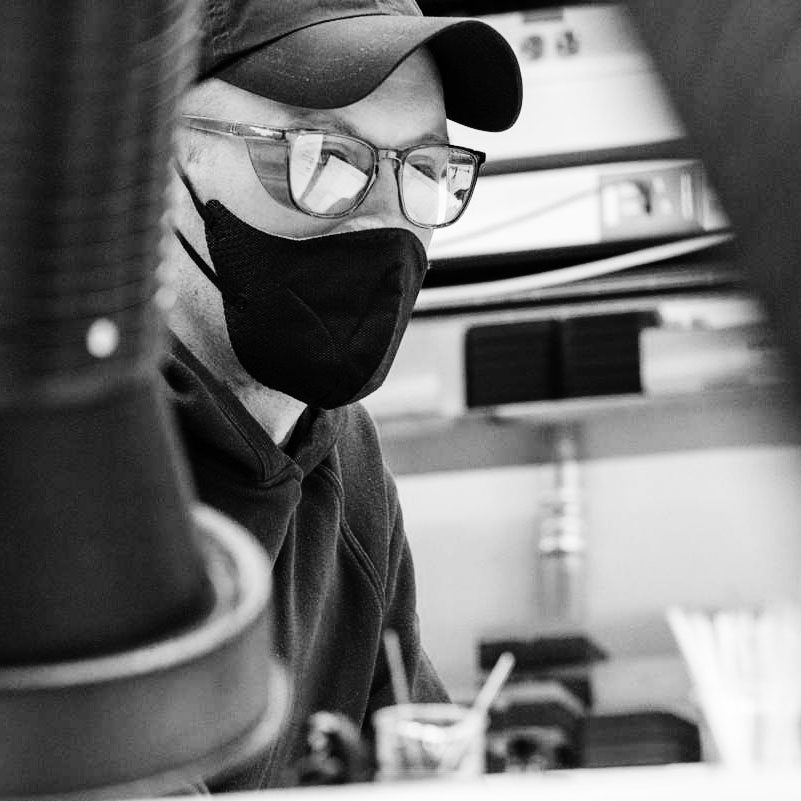
In 2021, the Maryland Department of Health and the state police were confronting a crisis: Fatal drug overdoses in the state were at an all-time high, and authorities didn’t know why. There was a general sense that it had something to do with changes in the supply of illicit drugs—and specifically of the synthetic opioid fentanyl, which has caused overdose deaths in the US to roughly double over the past decade, to more than 100,000 per year.
But Maryland officials were flying blind when it came to understanding these fluctuations in anything close to real time. The US Drug Enforcement Administration reported on the purity of drugs recovered in enforcement operations, but the DEA’s data offered limited detail and typically came back six to nine months after the seizures. By then, the actual drugs on the street had morphed many times over. Part of the investigative challenge was that fentanyl can be some 50 times more potent than heroin, and inhaling even a small amount can be deadly. This made conventional methods of analysis, which required handling the contents of drug packages directly, incredibly risky.
Seeking answers, Maryland officials turned to scientists at the National Institute of Standards and Technology, the national metrology institute for the United States, which defines and maintains standards of measurement essential to a wide range of industrial sectors and health and security applications.
There, a research chemist named Ed Sisco and his team had developed methods for detecting trace amounts of drugs, explosives, and other dangerous materials—techniques that could protect law enforcement officials and others who had to collect these samples. Essentially, Sisco’s lab had fine-tuned a technology called DART (for “direct analysis in real time”) mass spectrometry—which the US Transportation Security Administration uses to test for explosives by swiping your hand—to enable the detection of even tiny traces of chemicals collected from an investigation site. This meant that nobody had to open a bag or handle unidentified powders; a usable residue sample could be obtained by simply swiping the outside of the bag.
Sisco realized that first responders or volunteers at needle exchange sites could use these same methods to safely collect drug residue from bags, drug paraphernalia, or used test strips—which also meant they would no longer need to wait for law enforcement to seize drugs for testing. They could then safely mail the samples to NIST’s lab in Maryland and get results back in as little as 24 hours, thanks to innovations in Sisco’s lab that shaved the time to generate a complete report from 10 to 30 minutes to just one or two. This was partly enabled by algorithms that allowed them to skip the time-consuming step of separating the compounds in a sample before running an analysis.
The Rapid Drug Analysis and Research (RaDAR) program launched as a pilot in October 2021 and uncovered new, critical information almost immediately. Early analysis found xylazine—a veterinary sedative that’s been associated with gruesome wounds in users—in about 80% of opioid samples they collected.
This was a significant finding, Sisco says: “Forensic labs care about things that are illegal, not things that are not illegal but do potentially cause harm. Xylazine is not a scheduled compound, but it leads to wounds that can lead to amputation, and it makes the other drugs more dangerous.” In addition to the compounds that are known to appear in high concentrations in street drugs—xylazine, fentanyl, and the veterinary sedative medetomidine—NIST’s technology can pick out trace amounts of dozens of adulterants that swirl through the street-drug supply and can make it more dangerous, including acetaminophen, rat poison, and local anesthetics like lidocaine.
What’s more, the exact chemical formulation of fentanyl on the street is always changing, and differences in molecular structure can make the drugs deadlier. So Sisco’s team has developed new methods for spotting these “analogues”—compounds that resemble known chemical structures of fentanyl and related drugs.



The RaDAR program has expanded to work with partners in public health, city and state law enforcement, forensic science, and customs agencies at about 65 sites in 14 states. Sisco’s lab processes 700 to 1,000 samples a month. About 85% come from public health organizations that focus on harm reduction (an approach to minimizing negative impacts of drug use for people who are not ready to quit). Results are shared at these collection points, which also collect survey data about the effects of the drugs.
Jason Bienert, a wound-care nurse at Johns Hopkins who formerly volunteered with a nonprofit harm reduction organization in rural northern Maryland, started participating in the RaDAR program in spring 2024. “Xylazine hit like a storm here,” he says. “Everyone I took care of wanted to know what was in their drugs because they wanted to know if there was xylazine in it.” When the data started coming back, he says, “it almost became a race to see how many samples we could collect.” Bienert sent in about 14 samples weekly and created a chart on a dry-erase board, with drugs identified by the logos on their bags, sorted into columns according to the compounds found in them: heroin, fentanyl, xylazine, and everything else.
“It was a super useful tool,” Bienert says. “Everyone accepted the validity of it.” As people came back to check on the results of testing, he was able to build rapport and offer additional support, including providing wound care for about 50 people a week.
The breadth and depth of testing under the RaDAR program allow an eagle’s-eye view of the national street-drug landscape—and insights about drug trafficking. “We’re seeing distinct fingerprints from different states,” says Sisco. NIST’s analysis shows that fentanyl has taken over the opioid market—except for pockets in the Southwest, there is very little heroin on the streets anymore. But the fentanyl supply varies dramatically as you cross the US. “If you drill down in the states,” says Sisco, “you also see different fingerprints in different areas.” Maryland, for example, has two distinct fentanyl supplies—one with xylazine and one without.
In summer 2024, RaDAR analysis detected something really unusual: the sudden appearance of an industrial-grade chemical called BTMPS, which is used to preserve plastic, in drug samples nationwide. In the human body, BTMPS acts as a calcium channel blocker, which lowers blood pressure, and mixed with xylazine or medetomidine, can make overdoses harder to treat. Exactly why and how BTMPS showed up in the drug supply isn’t clear, but it continues to be found in fentanyl samples at a sustained level since it was initially detected. “This was an example of a compound we would have never thought to look for,” says Sisco.
To Sisco, Bienert, and others working on the public health front of the drug crisis, the ever-shifting chemical composition of the street-drug supply speaks to the futility of the “war on drugs.” They point out that a crackdown on heroin smuggling is what gave rise to fentanyl. And NIST’s data shows how in June 2024—the month after Pennsylvania governor Josh Shapiro signed a bill to make possession of xylazine illegal in his state—it was almost entirely replaced on the East Coast by the next veterinary drug, medetomidine.
Over the past year, for reasons that are not fully understood, drug overdose deaths nationally have been falling for the first time in decades. One theory is that xylazine has longer-lasting effects than fentanyl, which means people using drugs are taking them less often. Or it could be that more and better information about the drugs themselves is helping people make safer decisions.
“It’s difficult to say the program prevents overdoses and saves lives,” says Sisco. “But it increases the likelihood of people coming in to needle exchange centers and getting more linkages to wound care, other services, other education.” Working with public health partners “has humanized this entire area for me,” he says. “There’s a lot more gray than you think—it’s not black and white. And it’s a matter of life or death for some of these people.”
Adam Bluestein writes about innovation in business, science, and technology.